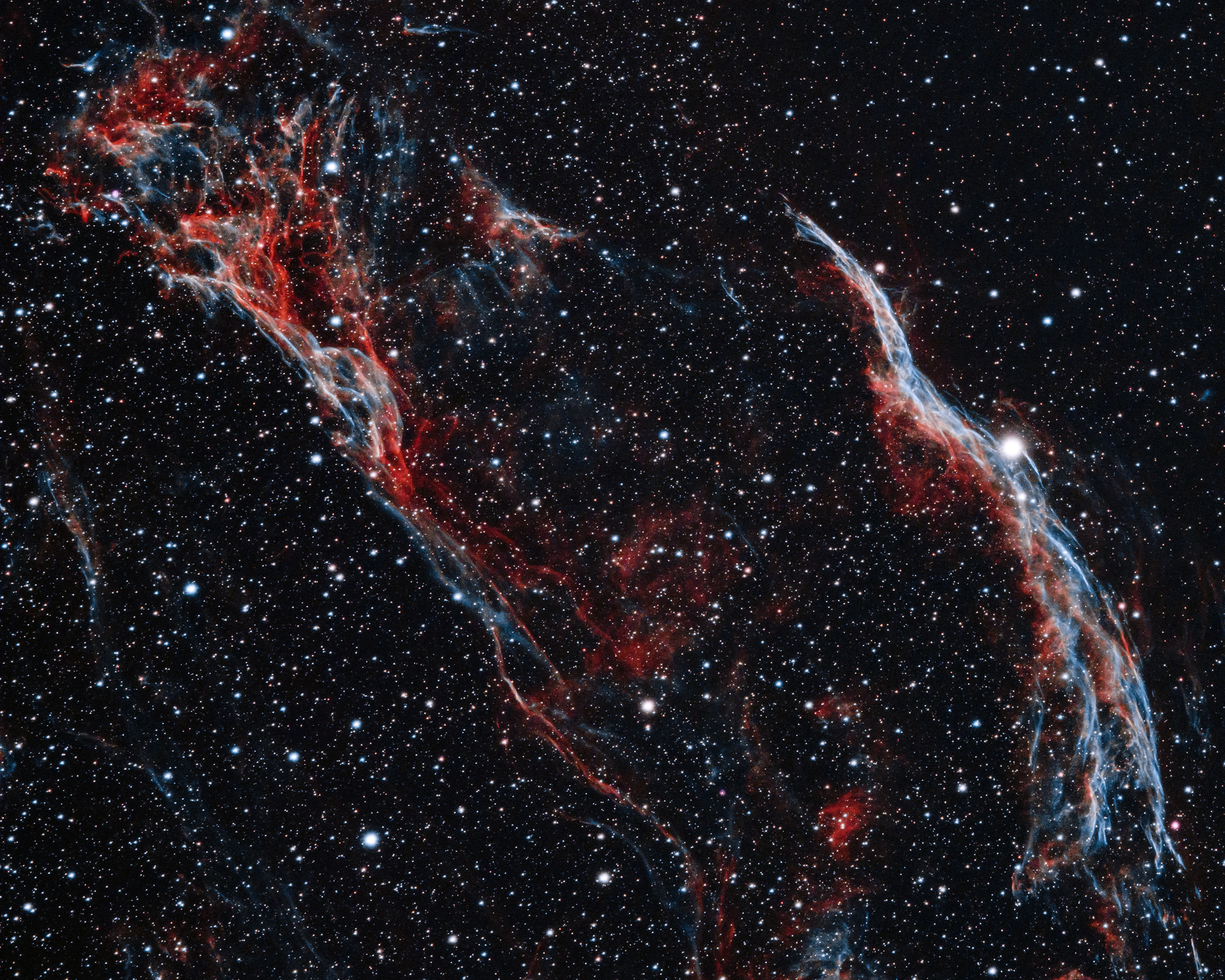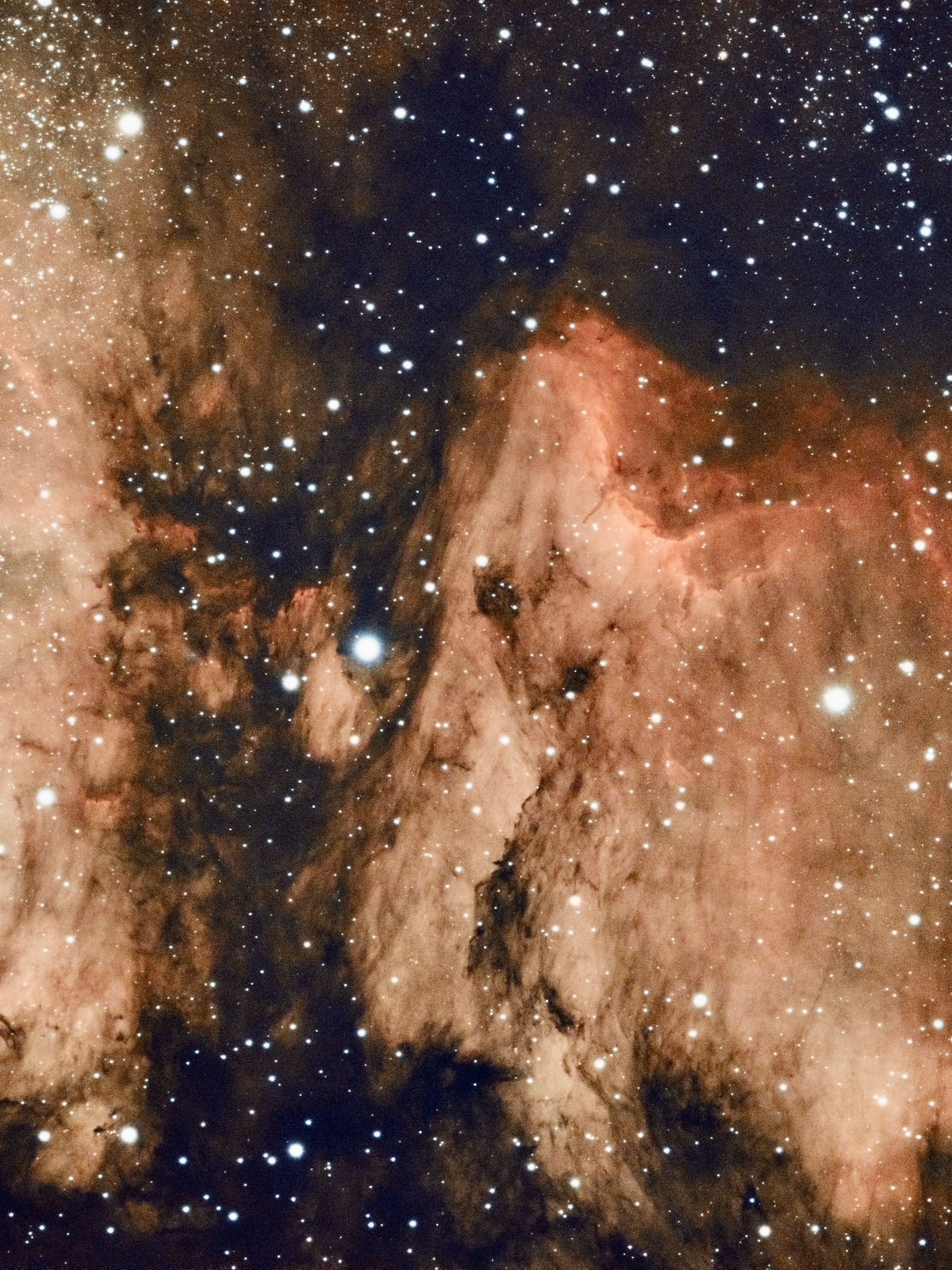cygnus
Western Veil nebula

A part of the Veil nebula complex from Cygnus. This is Pickering’s triangle and Witch’s broom (NGC6960). This supernova remnant glows in Halpha and Oiii frequencies which is perfect for LeXtreme narrowband filter that selects those frequencies. I have tried this image several times before but this 4 hour exposure is the best so far. There is so much detail and color of the nebula that I couldn’t capture before.
Interestingly, the bright star near Witch’s broom, 52 Cygni is at 290 light years while the veil nebula is at almost 8 times that distance at 2400 light years. This supernova happened between 10,000 and 20,000 years ago. Anyone looking at the sky at that time probably saw a star much brighter than Venus.
WO ZS61 - ZWO ASI533MC-PRO - LeXtreme - 80 x 3 min - SIRIL - PS
Pelican nebula - Sep2022
Pelican nebula (IC 5070) is located in Cygnus constellation, right next to the North American nebula. This emission nebula is about 1800 light years away and is 30 light years across. In this image I was struck by the incredible detail that can be seen in the silhouetted dark dust regions.

Really happy with how well the current setup is working. For auto guiding, the RMS error is consistently less than 1 arc second. This makes nice round pin-point stars even with 5 minute long exposures. The narrowband L-eXtreme filter performs very well with light suppression.
Telescope: William Optics Zenithstar 61; focal length 360mm
Optolong L-eXtreme narrowband filter
Camera: ZWO ASI533MC-pro, cooled to -10C
5 minute exposures with auto guiding; total exposure of 3 hours;
used dark, flat, bias calibration frames
Processed in SIRIL and PhotoShop
Stargazings 10-18-08
It was a quick half hour session with Adit calling me to come in every 5 minutes. A clear and cold night made everything look very beautiful. These sky conditions along with the good quality optics of William Optics Megrez 90 were responsible for excellent viewing with good contrast. Here is what I was able to catch:
Jupiter: All four moon visible; all were on the same side.
M22 and M28 from Saggitarius: It was my first time to see these two clusters. They can be found around lambda Saggitarius. M22 is a big and very dense, nice looking, globular star cluster. Very easy to spot. M28 is much smaller and fainter.
M57: “Ring nebula” a planetary nebula from Lyra.
M56: a globular star cluster from Lyra. It lies on the straight line between M57 and Albeiro (beta-Cygnus), almost at the midpoint.
Albeiro: Famous double star in Cygnus. Two bright colorful stars: Orange and blue.
M31 and M32: Andromeda and its companion galaxy.
NGC869 and NGC884: Double cluster in Perseus.